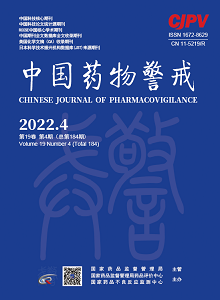|
|
Association between ABCB1 C3435T polymorphisms and methotrexate-induced toxicity in childhood acute lymphoblastic leukemia: Meta analysis
LI Yu, FAN Huihui, FENG Xiaojun, ZHANG Yonghuang, CHEN Qin, WANG Yunhong, CHEN Chuantao, ZHANG Lei, SHI Tianlu
2022, 19(4):
421-425.
DOI: 10.19803/j.1672-8629.2022.04.17
Objective To study the correlations between ABCB1 C3435T genetic polymorphisms and the safety of MTX in pediatric ALL. Methods PubMed, Science direct, CNKI, and Wanfang database were searched for the most eligible studies published from the inception to March 2020. Meta analysis was performed using RevMan 5.3 software. Results A total of 13 studies were included involving 1951 patients. Meta-analysis results showed that CT/TT genetype increased the chance of hepatotoxicity in pediatric ALL compared with CC genetype[OR=2.36, 95% CI (1.38~4.06), I2=0%, P=0.002]. There was no association between ABCB1 C3435T genetic polymorphisms and mucositis[OR=1.44, 95% CI (0.94~2.19), I2=25%, P=0.09], gastrointestinal reaction[OR=0.91, 95% CI (0.54~1.54), I2=0%, P=0.74], myelosuppression [OR=1.24, 95%CI (0.42~3.67), I2=74%, P=0.69], renal insufficiency[OR=0.51, 95% CI (0.13~1.93), I2=0%, P=0.32], excretion delay [OR=1.05, 95% CI (0.38~2.90), I2=0%, P=0.92] , 24 h[SMD=0.49, 95% CI (-0.59~1.57), I2=83%, P=0.37] and 42h [SMD=0.03, 95% CI(-0.40~0.47), I2=0%, P=0.88] MTX concentrations in children with ALL. Conclusion ABCB1 C3435T genetic mutations can increases the incidence of hepatotoxicity in pediatric ALL. The genetic polymorphism of ABCB1 C3435T has no effect on mucositis, gastrointestinal reactions, myelosuppression, renal insufficiency, excretion delay or plasma levels of MTX .
References |
Related Articles |
Metrics
|

